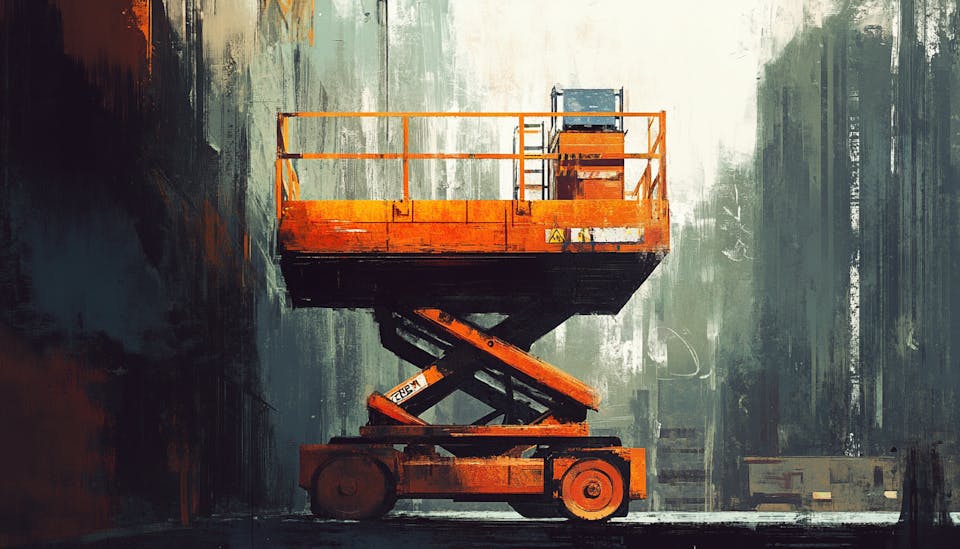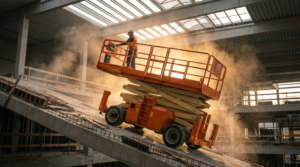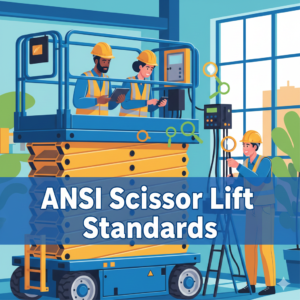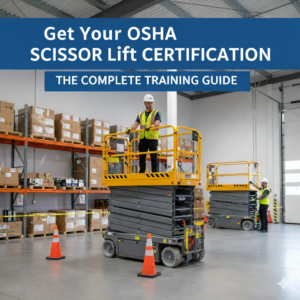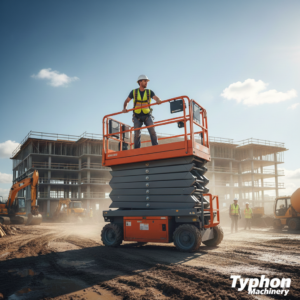Scissor lifts first seem to be another piece of machinery meant to raise. On closer scrutiny, though, these adaptable workhorses show themselves as vital actors in a variety of sectors—from warehouses humming with activity to building sites humming with labor.
These platforms have become essential for securely and effectively reaching heights as they ascend like a contemporary scaffold. Scissor lifts provide a handy way to reach those difficult locations, whether it’s for installing lighting fixtures far above a shop location or doing maintenance on ornate ceilings.
But the narrative of scissor lifts is really about safety and accessibility, not only height. Ensuring worker protection is critical in fields where every foot gained can have a big impact. Many years of injuries from ladder or scaffolding falls abound. Scissor lifts not only help to reduce these hazards but also enable employees to confidently complete their duties knowing they have the appropriate tools at hand.
Understanding how these tools operate—and why they matter—is crucial for everyone engaged in hands-on work across many environments, stressing both height safety and efficiency. Come explore with us the world of scissor lifts, their mechanics, uses, and vital part in improving workplace safety and efficiency.
Understanding Scissor Lifts
At first glance, scissor lifts appear to be fairly straightforward—they raise a platform using a series of crossed beams that fold and expand like a pair of scissors, hence the name. The mechanisms behind these lifts are both smart and pragmatic.
The mechanism rises vertically and keeps stability when the hydraulic or electric system is turned on. This design lets employees securely reach notable heights. Scissor lifts give a limited workspace that gives more safety and flexibility for jobs needing elevation than elevators or cranes.
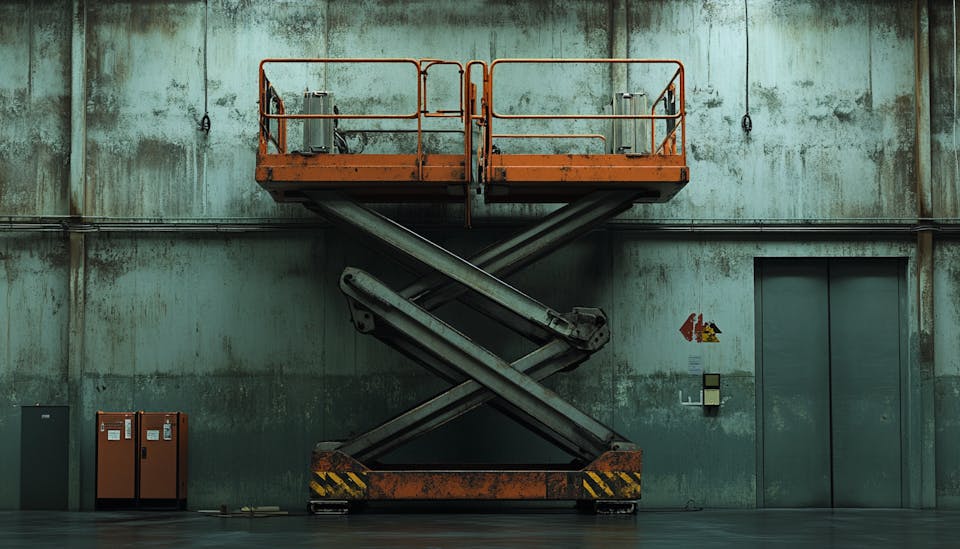
Different uses call for many kinds of scissors lifts. Quiet and appropriate for interior usage, electric variants are perfect for think-through maintenance teams operating in facilities where noise might cause problems. On building sites where durability is critical and heavier weights are handled, hydraulic scissor lifts provide strong lifting capability.
Pneumatic versions, which run on air pressure, are typically seen in places like some chemical industries where electricity causes hazards. Every model offers special benefits based on job criteria and working environment variables.
Scissor lifts have a different operational footprint and lift type than other aerial work platforms, such as boom lifts or cherrypickers. Although their extending arms allow boom lifts to reach over barriers, making them perfect for large outdoor projects, scissor lifts are best for vertical movement, thereby optimizing height without requiring more horizontal space.
For instance, a small scissor lift may efficiently negotiate narrow corridors in packed facilities when mobility is essential and provide steady elevation for inventory control chores.
Knowing the physics and varieties of scissor lifts helps one to appreciate these priceless instruments in many different fields. Where access meets safety in powered elevation solutions, both an electric model racing through a busy business and a hydraulic version towering over construction pandemonium are vital.
Key Features of Scissor Lifts
Among the most important factors to consider in a scissor lift is the weight capability and platform size. These factors directly affect where and how you could utilize the elevator. Typical platforms span 10 to over 50 feet in height and run 4 to 8 feet in width.
Most versions can withstand 500 to 1,000 pounds, which lets numerous workers or tools effectively reach raised locations. A huge platform type that allows several team members and their equipment would help a contractor working on a multi-story refurbishment, especially in terms of operation simplification.

When it comes to scissor lifts, safety aspects are first priority, as they give operators several levels of protection during jobs at considerable heights. Most contemporary lifts include guardrails that stop falls and also include easily reachable emergency stop buttons from the ground controls and platform.
Slope limits also guarantee that these devices stay steady on uneven terrain; some even include automated leveling mechanisms that change as necessary. It goes beyond simply finishing the task; safety precautions protect life.
Another important consideration in scissor lift effectiveness is maneuverability. When negotiating packed workspaces or limited areas like warehouses or retail locations, a close turning radius may make all the difference. Many more recent models include sophisticated steering systems that enable fluid movement even in confined spaces.
Whether you’re moving positions during a building project or wheeling into an aisle for inventory control, having a machine that reacts fast and precisely is very essential for efficiency and safety both.
Choosing the correct scissor lift calls for consideration of its size, safety features, and mobility. Make sure your decision fits your particular requirements for different jobs; balance security with accessibility to create a secure and efficient workplace for all the engaged parties.
Applications Across Industries
In the building sector, scissor lifts have become very essential for simplifying a range of high jobs. For example, workers installing electrical systems, HVAC units, or drywall high above ground level commonly depend on scissor lifts while erecting multi-story structures.
These gadgets can negotiate confined areas and offer steady platforms to enable workers to do complex tasks without sacrificing safety. This not only improves output but also saves time spent shifting scaffolding about construction sites.
For its adaptability during maintenance and repairs, scissor lifts are often valued by facility managers. Scissor lifts shine while a facilities manager is changing light bulbs on a large warehouse ceiling or doing regular maintenance on overhead equipment.
Their easy mobility into difficult-to-reach locations facilitates effective management of maintenance chores and reduces disturbance of normal operations. Furthermore, quick access to raised buildings guarantees consistent maintenance, which is absolutely essential for preserving workplace compliance and safety.
Scissor lifts are becoming more and more important instruments for effective inventory control and order selection among warehouse personnel. Time is money in big distribution centers; hence, it is imperative to be able to quickly arrange goods at several levels without compromising equilibrium.
Adjustable platforms let operators comfortably access high storage shelves, hence enhancing efficiency and lessening of unneeded staff effort. It follows: Simplified procedures that maintain flawless flow of products from storage to shipping docks—all the while improving employee safety by means of raised working platforms.
Scissor lifts clearly improve duties but also general efficiency, safety, and productivity for personnel in construction, facilities management, and warehouses all around. Every industry uses these platforms differently but depends on their principles: stability mixed with accessibility makes all the difference in properly and securely completing work.
Safety Considerations
Regarding scissor lifts, safety is of first concern. These robots might have amazing height capacity, but workers still have to be alert about their surroundings. A key component of one of the most important best practices is understanding overhead risks like electricity lines.
Depending on local rules, a worker should never operate a scissor lift inside an authorized safety zone surrounding these lines. The distance will vary. Emphasizing the requirement of clear demarcation and crew member communication before activities start, even an accidental touch across a live wire might have disastrous results.
Regular inspections and maintenance checks guaranteeing best performance are also rather important. This covers not just a cursory look of the mechanical components of the lift but also a hydraulic system leak check and a guarantee of proper operation of emergency stop buttons.
For instance, think of a facility manager in charge of regular maintenance at a warehouse; neglecting little technical problems might compromise operational effectiveness during busy times. Establishing a structured schedule for inspections can help catch problems early, preventing potential accidents that could compromise both worker safety and productivity.
When talking about safe operating techniques, the training needs cannot be emphasized too much. Comprehensive training covering not just machine handling but also how to spot any risks in their working environment is required of operators. Imagine a recently trained operator assigned high-level maintenance tasks on industrial equipment; without enough preparation, they may ignore uneven terrain or insufficiently secured platforms, resulting in major mishaps.
Strict training guidelines guarantee operators are ready to negotiate several situations securely and maximize the use of scissor lifts.
Prioritizing safety around scissor lifts means keeping a great awareness of surroundings, following strict inspection schedules, and funding comprehensive operator training. These actions not only safeguard people working at sites but also improve general project productivity, thereby guiding common sense procedures for any company using these essential instruments.
Cost-Benefit Analysis
When weighing a scissor lift, the financial choice usually comes down to buying instead than renting. Renting could be a tempting choice for smaller enterprises or companies with low utilization needs. It lets one access contemporary models without paying the large initial purchase cost.
Renting might also include maintenance and repairs, therefore saving businesses from unplanned costs. But if you run regular scissor lift operations, investing in one might pay off handsomely over time. The secret is comparing your particular requirement to long-term expenses.
Past the first money signs, a larger picture of job safety and efficiency emerges. By allowing employees to rapidly and safely execute high jobs, scissor lifts help to lower the possible risk of expensive mishaps resulting from incorrect equipment handling or ladder use.
For instance, think of a facility manager assigned to replace lights in high ceilings; using a scissor lift not only simplifies this chore but also significantly reduces the risk of workplace injuries resulting from falls, so possibly saving thousands of workers’ compensation claims and legal fees.
On another front, making consistent scissor lift investments results in benefits pertaining to output. Better access to such difficult-to-reach places allows staff members to reach more in less time, therefore increasing operational outputs. In building sites where deadlines rule everything, efficiency directly results in profit margins.
Businesses that use these instruments usually discover that their employees work quicker while upholding better safety standards, therefore improving their reputation—a win-win situation hard to ignore.
Your job level and financial projections will ultimately determine whether you decide to buy or rent. Making a wise choice concerning one of today’s indispensable tools—the scissor lift—requires an awareness of both the obvious expenses involved and the intangible advantages obtained.
Advancements in Scissor Lift Technology
Scissor lifts have had major technical developments improving their usefulness in the always changing terrain of building and maintenance. The enhancement in battery life is among the most amazing changes. Modern electric versions may now run longer on one charge, therefore lowering downtime and enabling longer work hours free from interruptions.
This increase in efficiency helps employees to undertake tasks with less logistical difficulties, therefore increasing general production dramatically.
Many scissor lifts today also include remote control capabilities, which simplifies operator management of lifting activities from a safe distance. This feature promotes accuracy while mounting equipment at height and not only improves safety by reducing any dangers connected with hand operation.
Imagine a facilities manager managing maintenance activities while remotely operating a lift; this degree of creativity changes the dynamics of the workplace and increases operational effectiveness in several environments.
Moreover, the use of smart technology marks a new chapter for scissor lifts. These devices are become smarter than they have ever been because to Internet of Things (IoT) capabilities. Through linked software programs, operators may watch consumption patterns and analyze performance criteria in real time, therefore enabling facility managers to maximize resource allocation and scheduling based on actual data. Businesses save overuse or inefficient operation expenses by using this technology, thereby guaranteeing that such lifts are operated safely and productively on job sites.
Furthermore evident is the industry’s increasing dedication to sustainability with environmentally friendly products stressing low energy usage and emissions. These creative scissors lifts let workers do required chores without sacrificing environmental values as businesses strive toward greener methods.
Using such technologies not only helps the environment but also satisfies societal obligations, matching rising customer demand for environmentally friendly solutions. In the end, technological developments are influencing every conversation on scissor lifts—from improving operating efficiency to adopting sustainable practices—ensuring they remain indispensible equipment across many sectors.
Choosing the Right Scissor Lift
Although choosing the appropriate scissor lift for your project might seem overwhelming, optimizing safety and efficiency depends on it. Evaluate first the particular requirements of your job site. Platform height, weight capacity, and the need for mobility should all be factors in your decision.
For instance, if you’re working in a tight warehouse environment, a compact model with a smaller turning radius may be ideal. Conversely, a bigger building site might call for a higher-capacity lift that can readily handle heavier equipment or supplies and provide access to raised work platforms.
Beyond only the system itself, your choice depends much on vendor dependability. Always look at possible vendors; read consumer reviews, check ratings online, and ask coworkers about their experiences.
Reliable vendors often offer warranties that cover parts and service; understanding these terms will help ensure you’re not left in the lurch if something goes wrong after your purchase or rental. Don’t hesitate to negotiate terms; finding a vendor willing to work with you on both price and service can lead to long-term savings.
Just as crucial is seeing seasoned experts before committing any time. Whether you want to replace your present equipment or are new to operating scissor lifts, experienced operators have insightful information that will guide you toward decisions more fit for your particular usage situation.
They can draw attention to elements that less experienced users sometimes overlook—such as battery management systems extending operational duration or stability controls for various terraces—which might eventually make all the difference during important periods of a project.
Carefully assessing task needs, balancing vendor dependability and warranty alternatives, and consulting reliable experts can help you to position yourself to make a wise decision improving both productivity and safety on the job site. After all, choosing the appropriate scissor lift requires work upfront that pays well when operations go without problems.
Maintenance Tips for Longevity
Maintaining your scissor lift is not just about making sure it functions well; it’s also a necessary habit that assures efficiency and safety on the workplace. Maintaining your elevator in ideal condition depends on regular, periodic inspections. Look first at important parts like safety elements, hydraulic systems, and batteries.
For example, maintaining hydraulic fluid levels helps avoid possible leak-caused accidents and declining lifting power. Like electrical wiring or hoses, all connections should be tight and free from wear; disregarding these problems could cause malfunctions just when you most need the equipment.
Equally crucial is knowing the working range of your scissor lift. Every model has unique weight capacity and working height characteristics. Not only does overloading a lift run a danger to the equipment, but it also seriously compromises operator safety. Imagine a worker in construction striving to reach higher ceilings with too much weight—inevitably this causes instability or lift failure itself.
Always refer to user manuals for instructions particular to your model; remember that following these restrictions is absolutely essential for extending lifetime.
Regular professional service will help your scissor lift last for several more years. Industry professionals advise regular inspections by qualified professionals who may find any sections prone to wear and tear before they cause problems. Your scissor lift gains much from same care, just as you would take your automobile in for regular maintenance after thousands of miles.
Time spent in expert servicing not only extends the lifetime of the equipment but also improves dependability onsite—a risk many operators cannot afford to ignore.
You are investing in both safety and productivity by giving regular inspections top priority, knowing operational restrictions, and timing professional service intervals. Not only a tool, a well-maintained scissor lift is a powerhouse supporting high-reaching jobs without sacrificing security criteria, so vital in many different fields.
Elevating Your Work: A Final Word on Scissor Lifts
From construction sites throbbing with activity to warehouses humming with order fulfillment, scissor lifts have proved to be great friends across a spectrum of businesses. Their adaptability helps employees to physically and practically soar, therefore improving efficiency and safety in the performance of their jobs.
These instruments are not just a comfort; they are also rather important in current workplaces that require accessibility and accuracy as they provide choices fit for almost any situation.
But as we negotiate the realm of scissor lifts, it’s imperative to underline that intelligent planning and safety cannot be sacrificed. Selecting appropriate tools and guaranteeing correct maintenance not only protects the individual operators but also improves general workplace output.
Using technology together with thorough training guarantees that scissor lifts remain a pillar of safe, efficient operations as experts constantly change with the terrain. Accept this elevation in your job; it’s about securely and effectively realizing your potential, not only about height.

